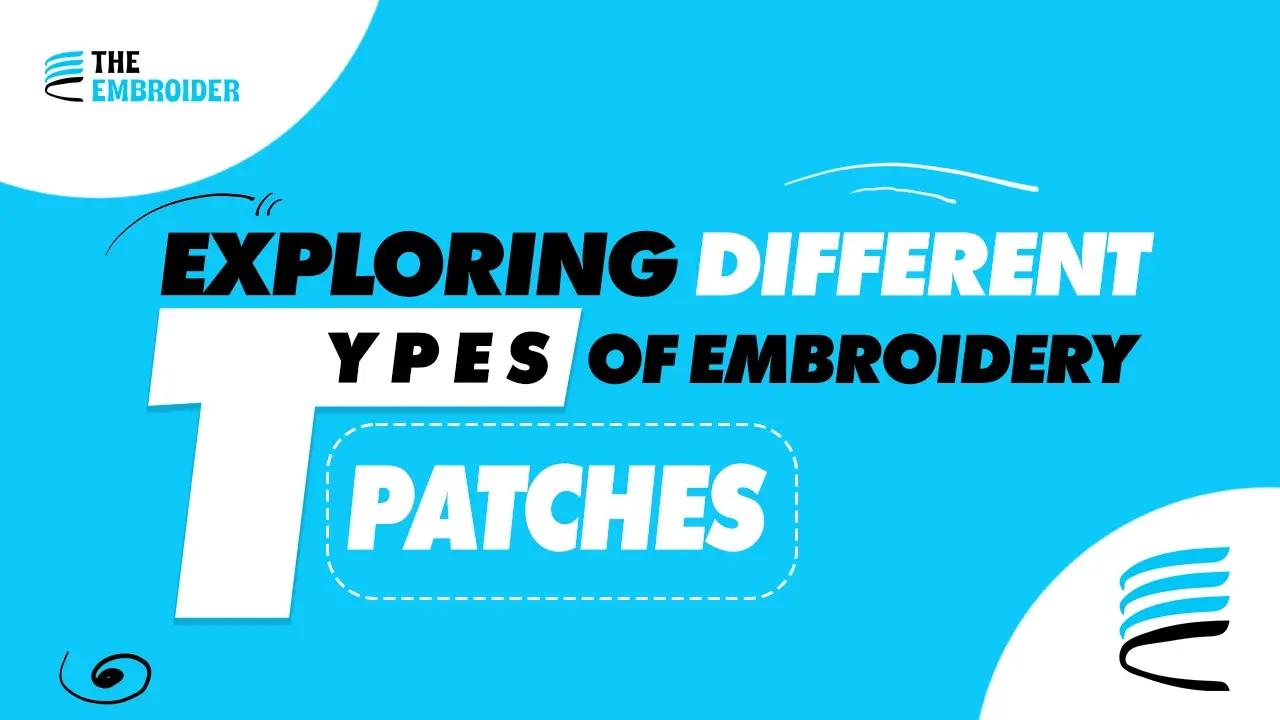Patches add personality. Whether you’re putting them on clothing, bags, hats, or jackets, knowing the Different Types of Embroidery Patches helps you pick the best one for what you need for looks, durability, cost, or feel.
Below are the patch styles we offer, what makes each one special, when they shine, and what trade-offs to expect.
1. Custom Embroidered Patches (Classic Embroidery)
This is the go-to if you want thread-stitched detail that shows texture and depth. Good on jackets, caps, or anywhere you want that classic embroidered look.
2. PVC Custom Patches
Tough, weather-resistant, bold, and waterproof perfect for gear that gets rough treatment. Ideals: outdoor bags, boots, patching things that see moisture or frequent wear.
3. Chenille Embroidery Patches
Soft and cozy, with raised yarn that puts out that varsity-jacket nostalgia. They feel great and add visual warmth, but can’t capture ultra fine detail.
4. Custom Appliqué Patches
Think layers of fabric sewn on and bordered. You get contrast of textures well when you want material mix or patch pieces that really stand out.
5. Personalize Leather Patches
Rich and durable; leather (or faux) adds polish. Whether embossed, stitched, or printed, these patches have a premium feel. Great for bags, hats, or jackets where you want an upscale vibe.
6. Embroidered Woven Patches
Sharp, flat, and clean. Woven patches use thinner threads, letting your design include crisp lines and small text. Less texture than embroidered ones, but exceptional precision.
7. Custom Sublimated Patches
Printed design, vibrant colors, photographic detail you’ll see those in projects where fine art, gradients, or complex images matter. If you need a fast turnaround without stitching, this is strong.
8. 3D Embroidered Patches
With puff, foam, or elevated stitching, 3D patches add dimension. Parts like letters or logos lift off the base; on hats or badges they grab attention and feel bold.
9. Adhesive-Backed / Iron-On / Hook & Loop Patches
Best when convenience matters. Iron-on backs or adhesive allow quick application. Hook & loop (Velcro) gives flexibility and you can change patches out. The trade-off is they often aren’t as tough under heavy washing or wear.
How to Pick the Right Patch
Ask yourself a few things before choosing:
- Where will it go (hat, bag, jacket)?
- How often will it be worn or washed?
- Do you want texture (raised, fuzzy, bold), or fine detail (text, small graphics)?
- How much are you willing to spend? Some types cost more, take more time (like leather or 3D puff).
Care Tips to Make Them Last
Just picking the right patch isn’t enough how you treat it matters:
- Wash inside out, gentle cycle
- Avoid ironing directly over the patch
- Let items dry naturally; heat can damage adhesives or threads
- Store away from direct sunlight, moisture
Here’s a helpful resource showing types of patches and their uses that you might find interesting: “Different Types of Patches” from Hero’s Pride.
Final Thoughts
When you understand the Different Types of Embroidery Patches, you get to choose what fits best style, vibe, durability. Each style (embroidered, woven, leather, chenille, PVC, etc.) has its own voice. Pick the one that matches your story, use it well, and your patches won’t just look good they’ll mean something.
FAQs
Q1: Which patch type lasts the longest?
PVC patches are among the toughest. They don’t fray or fade easily.
Q2: Can I mix patch styles on one item?
Yes many people combine a leather accent with a woven or embroidered patch to get both texture and detail.
Q3: Are adhesive or iron-on patches reliable over time?
They’re convenient, but tend to weaken after many washes. Sewing the edges helps them stay stuck longer.
Q4: Which patch type is best for fine lines or small text?
With woven patches or sublimated patches they capture crisp detail better than thick threads.

